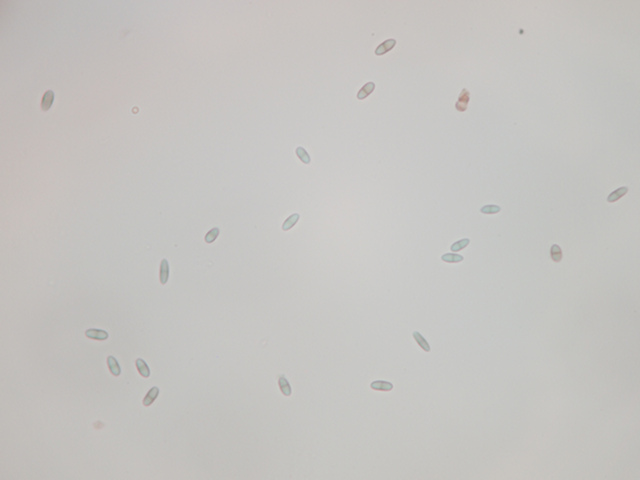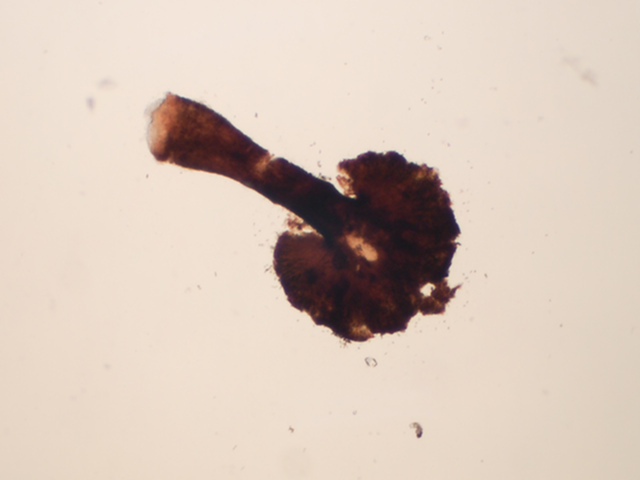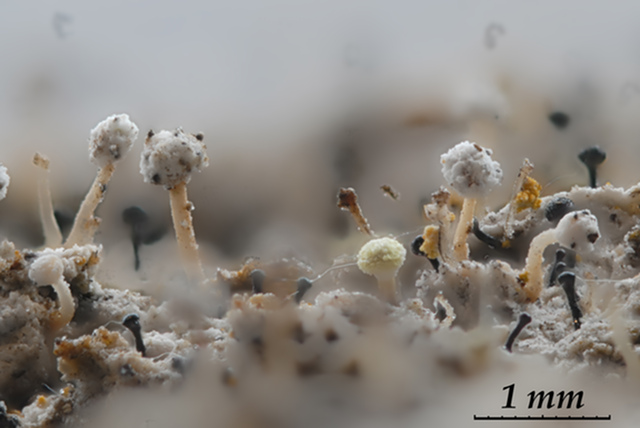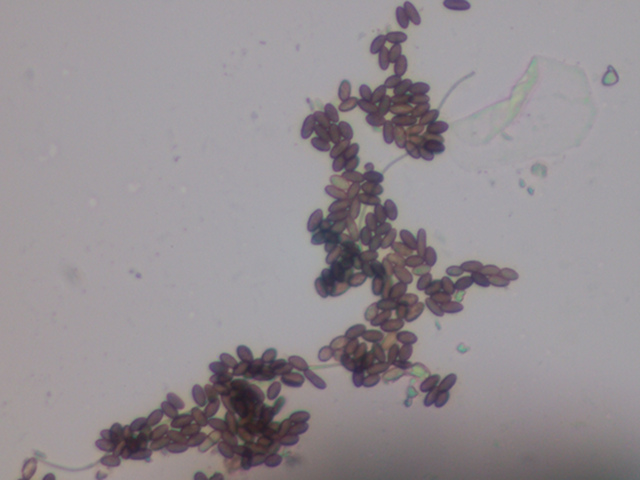- HOME
- Introduction
- History of "Caliciales" and the Origin of the "Calicioids"
- Biogeography of Calicioids
- Calicioid Ecology and Habitats
- Conservation
- Zen and the Search for Calicioids
- Collecting and Curating
- Key to Genera
- Acolium
- Acroscyphus
- Allocalicium
- Bruceomyces
- Calicium
- Chaenotheca
- Chaenothecopsis
- Cyphelium
- Cryptocalicium
- Microcalicium
- Mycocalicium
- Phaeocalicium
- Pseudothelomma
- Sclerophora
- Sphinctrina
- Stenocybe
- Texosporium
- Thelomma
- Tholurna
- "Within-bark"
- Glossary
- References
0.01 (development)
Eric B. Peterson
Chaenothecopsis
Chaenothecopsis may be the largest genus among the Calicioids and potentially undescribed members are surprisingly common. The challenge is that they are so small and with limited morphological diversity that species can be difficult to distinguish. The majority appear only as small black stalked ascomata with no thallus. I examine a sample first, marking (usually with insect pins) any variants in form that may suggest multiple species within the sample, then start plucking ascomata to look at under a compound scope. Creating a single key for all species of Chaenothecopsis is rather cumbersome, both for the key writer and for key users. I have broken it down by some basic groups in the following table, followed by separate keys for each group.
Taxa covered (79):
Chaenothecopsis "ghostly"
Chaenothecopsis "greenfoot"
Chaenothecopsis "hobit"
Chaenothecopsis "imperatrice"
Chaenothecopsis "klamath"
Chaenothecopsis "purple"
Chaenothecopsis aeruginosa
Chaenothecopsis amurensis
Chaenothecopsis arthoniae
Chaenothecopsis asperopoda
Chaenothecopsis australis
Chaenothecopsis brevipes
Chaenothecopsis caespitosa
Chaenothecopsis caucasica
Chaenothecopsis cinerea
Chaenothecopsis claydenii
Chaenothecopsis consociata
Chaenothecopsis debilis
Chaenothecopsis diabolica
Chaenothecopsis dolichocephala
Chaenothecopsis edbergii
Chaenothecopsis epithallina
Chaenothecopsis Eugenia
Chaenothecopsis exilis
Chaenothecopsis exserta
Chaenothecopsis fennica
Chaenothecopsis formosa
Chaenothecopsis golubkovae
Chaenothecopsis haemtopus
Chaenothecopsis heterospora
Chaenothecopsis himalayensis
Chaenothecopsis hospitans
Chaenothecopsis hyrcana
Chaenothecopsis irregularis
Chaenothecopsis jaczevskii
Chaenothecopsis kalbii
Chaenothecopsis khayensis
Chaenothecopsis kilimanjaroensis
Chaenothecopsis koerberi
Chaenothecopsis lecanactidis
Chaenothecopsis leifiana
Chaenothecopsis mediarossica
Chaenothecopsis montana
Chaenothecopsis nana
Chaenothecopsis nigra
Chaenothecopsis nigropedata
Chaenothecopsis nivea
Chaenothecopsis norstictica
Chaenothecopsis ochroleuca
Chaenothecopsis oregana
Chaenothecopsis parasitaster
Chaenothecopsis pilosa
Chaenothecopsis pusilla
Chaenothecopsis pusiola
Chaenothecopsis quintralis
Chaenothecopsis rappii
Chaenothecopsis resinicola
Chaenothecopsis retinens
Chaenothecopsis rubescens
Chaenothecopsis rubina
Chaenothecopsis sagenidii
Chaenothecopsis sanguinea
Chaenothecopsis savonica
Chaenothecopsis shefflerae
Chaenothecopsis sinensis
Chaenothecopsis sitchensis
Chaenothecopsis subparoica
Chaenothecopsis tasmanica
Chaenothecopsis thujae
Chaenothecopsis tibellii
Chaenothecopsis transbaikalica
Chaenothecopsis trassii
Chaenothecopsis tristis
Chaenothecopsis ussuriensis
Chaenothecopsis vainioana
Chaenothecopsis vinosa
Chaenothecopsis viridialba
Chaenothecopsis viridireagens
Warning: keys are incomplete.
| Key | Substrate soaked with Resin | Spore Septation |
|---|---|---|
| A | yes | any |
| B | no | yes |
| C | no | no |
Validation script believes the following taxa are missing from the keys:
- Chaenothecopsis "klamath"
- Chaenothecopsis caucasica
- Chaenothecopsis exserta
- Chaenothecopsis formosa
- Chaenothecopsis heterospora
- Chaenothecopsis hyrcana
- Chaenothecopsis leifiana
- Chaenothecopsis mediarossica
- Chaenothecopsis rappii
- Chaenothecopsis sinensis
- Chaenothecopsis transbaikalica
A. Key to Resinicolous Chaenothecopsis:
-
- 2a. Spores septate, 7.6 - 10.1 μm in length. Known from various conifers in North America, in both Pacific and Atlantic regions.Chaenothecopsis edbergii
-
- 3a. Known only from Sequoia and Sequoiadendron (and apparently endemic to California).Mycocalicium sequoiae
- 3b. Spores 3.5 - 5.3 μm; known only from Pinus; pruina may vary from greenish to white.Chaenothecopsis resinicola
- 1z. [step].[leaf]
-
- 5a. Capitulum with a thick white pruina; spores being extruded through the pruina to form black dots over the surface. Known only from Abies in North America where it occurs primarily in branch scars.Chaenothecopsis nigripunctata
-
- 6c. White to greenish pruina.Chaenothecopsis asperopoda
-
- 7a. Spore mass distinctly brown in color.Bruceomyces castoris
-
-
- 9a. On viscin of Mistletoe (Tristerix); known only from high altitudes in Ecuador and Peru.Mycocalicium viscinicola
-
- 10a. Spores minute, 3.5 - 5.5 μm long; stalk usually with a rough surface and a greenish to whitish pruina.Chaenothecopsis resinicola
-
- 11a. On hardwoods, known from tropical Africa.Chaenothecopsis khayensis
-
- 12a. Growing on distinct resin; ascomata typically thick-stalked; spores 6.7 - 7.5 μm long with broadly rounded ends and a greenish color.Chaenothecopsis montana
- 12b. Growing on well exposed bark with just a hint of resin; ascomata typically slender; ascospores 6 - 8 μm long, allantoid (somewhat pointed ends), with a dark brown pigmentation. This species is typically not treated as resinicolous.Chaenothecopsis nana
-
- 13a. K red to purple. (Also known as C. oregana.).Chaenothecopsis diabolica
-
- 14a. .Mycocalicium chaudhari
- 14b. .Chaenothecopsis tsugae
-
-
Step number 6 has 6 options!
B. Key to Non-resinicolous Chaenothecopsis with Septate Spores:
- 1a. Ascomata reacting red, purple, or green to KOH (may fade quickly) as viewed in squash-mount with compound microscope.
-
-
- 4a. Color reaction typically purplish wine-red and fading quickly (you may even need to watch carefully as the KOH wave passes through the specimen). Ascomata often found on resin-impregnated wood.Chaenothecopsis pusiola
- 4b. Color reaction typically deep purple. Known only from wood of Quercus in southern Oregon, U.S.A.Chaenothecopsis "purple"
-
-
- 6a. Obligate parasite on Chaenotheca chrysocephala.Chaenothecopsis consociata
-
- 7a. Stalk in water mount appearing intensely red; spores narrowly ellipsoidal, 7 - 8 μm long.Chaenothecopsis rubina
- 7b. Upper part with +/- reddish tinge; epithecium and stalk mainly brown or olive-brown but stalk sometimes reddish in parts; spore _ long.Chaenothecopsis viridireagens
-
- 1b. Ascomata without a color reaction to KOH as viewed in squash-mount with compound microscope, or if a color reaction occurs, then turning dingy-yellow or brown.
-
- 8d. Growing parasitically on a lichen thallus (sometimes other calicioids). Note that it should be clear that it is growing from the thallus, not from wood but surrounded by a lichen thallus; sometimes leprose lichens will cover substrates where Chaenothecopsis is growing saprophytically.
- 8e. Growing saprophytically from wood or bark. Algal colonies may be present, or not, within the substrate.
- 11a. Ascomata with white or bluish-white dusty pruina on either capitulum or stalk. Spore septation strong.
- 12a. Ascomata very small, ≤ 0.5 mm tall; capitula typically spherical and entirely encrusted in pruina. Known from deep fissures and beetle tunnels in bark of Pseudotsuga menziesii.Chaenothecopsis "ghostly"
- 12b. Ascomata of variable size, often > 0.5 mm tall; capitula relatively tall and narrow; pruina often with a bluish tinge.
- 13a. .Chaenothecopsis fennica
- 11b. Ascomata lacking a dusty pruina (though sometimes a pale waxy sheen may form on the excipulum). Strength of spore septation somewhat weak except for one species (C. debilis).
- 14a. Ascospores typically 7 - 9 μm. Stalk and capitulum often 1 mm or taller, and with greenish pigments.Chaenothecopsis aeruginosa
- 14b. Ascospores typically 6 - 7 μm long. Ascomata typically < 1 mm tall (often significantly smaller). Pigments variable.
- 15a. Ascomata small, ≤ 0.5 mm tall, darkly pigmented in squash mount (often deeply green but sometimes brown to black). Ascomata formed within the bark between flakes or other cracks.Chaenothecopsis "greenfoot"
- 15b. Ascomata smallish, but often > 0.5 mm tall; pigments visible in squash mount primarily brown or even slightly reddish. Ascomata growing where exposed to light.
- 16a. HNO3+ red. [Stalk not swelling in KOH? - I need to double check this.] A variable taxon in terms of pruina and ascomata density. I suspect that it actually represents two species: one epruinose, typically sparse ascomata on bark of Quercus or Pseudotsuga; the other pruinose, typically forming dense colonies over Quercus bark.Chaenothecopsis debilis
- 16b. HNO3-. Stalk swelling strongly in KOH. Pigmentation variable. Substrates variable. Sometimes on substrates with algae present. Likely a cluster of cryptic speciation.Chaenothecopsis pusilla
-
Step number 8 has 5 options!
Step number 9 has 18 options!
C. Key to Non-resinicolous Chaenothecopsis with Non-septate Spores
- 1a. Ascomata reacting red, purple, or green to KOH (may fade quickly) as viewed in squash-mount with compound microscope.
-
-
- 4a. Spores allantoid, with a strong brown pigment. Ascomata short-stalked, typically ≤ 0.3 mm tall. Excipulum typically constricted at the rim.Chaenothecopsis "imperatrice"
-
-
- 1b. Ascomata without a color reaction to KOH as viewed in squash-mount with compound microscope, or if a color reaction occurs, then turning dingy-yellow or brown.
- 6a. Growing on dung.Chaenothecopsis quintralis
-
- 7z. .Chaenothecopsis nana
- 7z. (presumed K- but not yet tested). Very small (< 0.3 mm), stalk pale to white, capitula black. Ascospores variable in size and pointiness.Chaenothecopsis "hobit"
Step number 5 has 6 options!
Step number 7 has 13 options!
ID=71
Type(s):
Synonyms:
Habit and Morphology:
Anatomy:
Chemistry:
Habitat:
Biogeography:
Global Rank:
Conservation:
Notes:
External Information:
 Index Fungorum: ID=
Index Fungorum: ID= Encyclopedia of Life (EOL): Search
Encyclopedia of Life (EOL): Search - CNALH: Search
- NatureServe:
 ODBaL Search
ODBaL SearchNucleotide Search
ID=233
Type(s):
Synonyms:
Habit and Morphology:
Anatomy:
Chemistry:
Habitat:
Biogeography:
Global Rank:
Conservation:
Notes:
External Information:
 Index Fungorum: ID=
Index Fungorum: ID= Encyclopedia of Life (EOL): Search
Encyclopedia of Life (EOL): Search - CNALH: Search
- NatureServe:
 ODBaL Search
ODBaL SearchNucleotide Search
ID=135
Type(s):
Synonyms:
Habit and Morphology:
Anatomy:
Chemistry:
Habitat:
Biogeography:
Global Rank:
Conservation:
Notes:
External Information:
 Index Fungorum: ID=
Index Fungorum: ID= Encyclopedia of Life (EOL): Search
Encyclopedia of Life (EOL): Search - CNALH: Search
- NatureServe:
 ODBaL Search
ODBaL SearchNucleotide Search
ID=251
Type(s):
Synonyms:
Habit and Morphology:
Small with a slighly fuzzy stalk.
Anatomy:
Chemistry:
Habitat:
Hidden within bark of Pseudotsuga menziesii.
Biogeography:
Global Rank:
Conservation:
Notes:
External Information:
 Index Fungorum: ID=
Index Fungorum: ID= Encyclopedia of Life (EOL): Search
Encyclopedia of Life (EOL): Search - CNALH: Search
- NatureServe:
 ODBaL Search
ODBaL SearchNucleotide Search
ID=236
Type(s):
Synonyms:

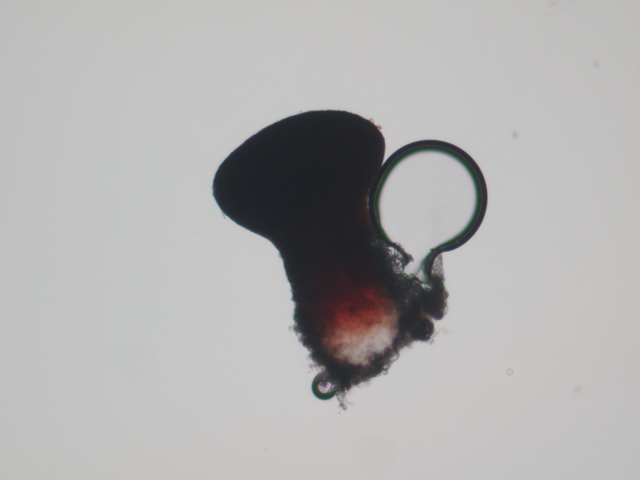
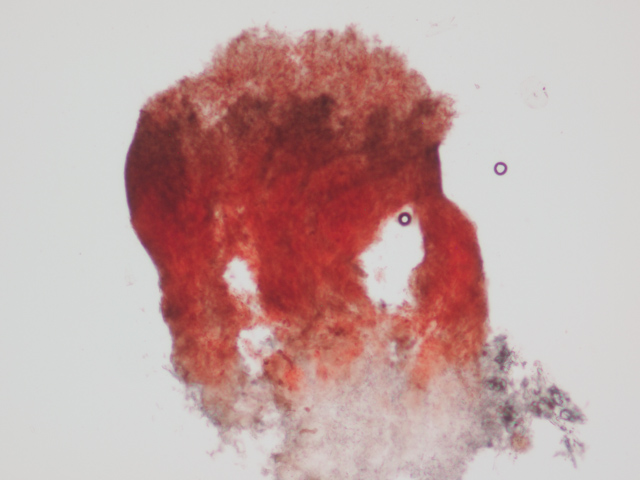
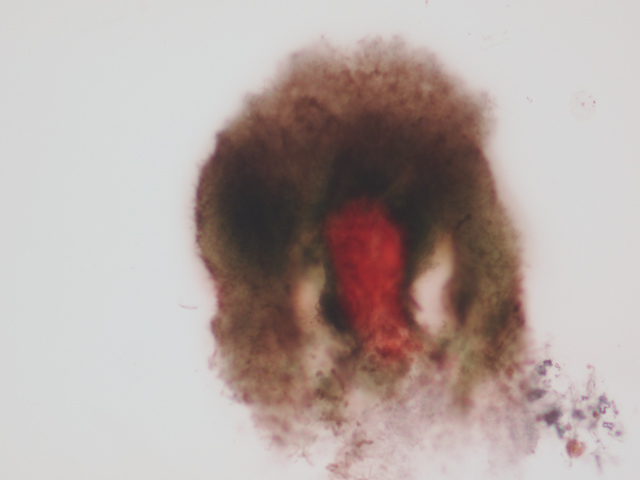

Habit and Morphology:
Anatomy:
Chemistry:
Habitat:
Biogeography:
Global Rank:
Conservation:
Notes:
Found by Scot Loring at "Imperatrice" near Ashland, OR, specimen number SCL16925.
External Information:
 Index Fungorum: ID=
Index Fungorum: ID= Encyclopedia of Life (EOL): Search
Encyclopedia of Life (EOL): Search - CNALH: Search
- NatureServe:
 ODBaL Search
ODBaL SearchNucleotide Search
ID=235
Type(s):
Synonyms:
Habit and Morphology:
Anatomy:
Chemistry:
Habitat:
Biogeography:
Global Rank:
Conservation:
Notes:
External Information:
 Index Fungorum: ID=
Index Fungorum: ID= Encyclopedia of Life (EOL): Search
Encyclopedia of Life (EOL): Search - CNALH: Search
- NatureServe:
 ODBaL Search
ODBaL SearchNucleotide Search
ID=239
Type(s):
Synonyms:
Habit and Morphology:
Anatomy:
Chemistry:
Habitat:
Biogeography:
Global Rank:
Conservation:
Notes:
External Information:
 Index Fungorum: ID=
Index Fungorum: ID= Encyclopedia of Life (EOL): Search
Encyclopedia of Life (EOL): Search - CNALH: Search
- NatureServe:
 ODBaL Search
ODBaL SearchNucleotide Search
ID=64
Type(s):
Synonyms:
Habit and Morphology:
Anatomy:
Chemistry:
Habitat:
Biogeography:
Global Rank:
Conservation:
Notes:
External Information:
 Index Fungorum: ID=
Index Fungorum: ID= Encyclopedia of Life (EOL): Search
Encyclopedia of Life (EOL): Search - CNALH: Search
- NatureServe:
 ODBaL Search
ODBaL SearchNucleotide Search
ID=65
Type(s): Titov & Tibell 1993
Synonyms:
Habit and Morphology: Associated with Trentepohlia. Thallus immersed. Ascomata small, 0.2-0.4 mm tall.
Anatomy: Ascomata epruinose. Stalk outwardly of periclinal hyphae; more pale and irregularly interwoven inward. Asci cylindrical to narrowly clavate; apex thick with a fine canal. Ascospores on-septate, ellipsoidal to allantoid, brown, 4.5 - 8 um X 1.8 - 3.9 um, smooth to very minutely ornamented.
Chemistry: K-, N-
Habitat: Moist deciduous or mixed Pinus - deciduous forests. Reported only from bark of Phellodendron amurense.
Biogeography: Russian far east.
Global Rank:
Conservation:
Notes:
External Information:
 Index Fungorum: ID=
Index Fungorum: ID= Encyclopedia of Life (EOL): Search
Encyclopedia of Life (EOL): Search - CNALH: Search
- NatureServe:
 ODBaL Search
ODBaL SearchNucleotide Search
ID=66
Type(s): (Tibell 1998)
Synonyms:
Habit and Morphology:
Anatomy:
Chemistry:
Habitat:
Biogeography:
Global Rank:
Conservation:
Notes:
External Information:
 Index Fungorum: ID=
Index Fungorum: ID= Encyclopedia of Life (EOL): Search
Encyclopedia of Life (EOL): Search - CNALH: Search
- NatureServe:
 ODBaL Search
ODBaL SearchNucleotide Search
ID=67
Type(s):
Titov & Tibell (1993)
Synonyms:
Habit and Morphology:
On conifer exudate (Picea) without algae.
Thallus not described.
Ascomatal stature medium to large, 0.5 - 2.5 mm tall, straight to flexuous; sometimes with a reddish color to the lower excipulum and upper stalk.
Anatomy:
Stalk with a rough texture and often covered by a greenish or whitish pruina. Capitulum black. Excipulum poorly developed.
[left off - NEED TO COMPLETE]
Chemistry:
K+R->G (reddish pigments intensifying, then becoming aeruginose); N-.
Habitat:
Biogeography:
Global Rank:
Conservation:
Notes:
External Information:
 Index Fungorum: ID=
Index Fungorum: ID= Encyclopedia of Life (EOL): Search
Encyclopedia of Life (EOL): Search - CNALH: Search
- NatureServe:
 ODBaL Search
ODBaL SearchNucleotide Search
ID=68
Type(s): (Tibell 1998)
Synonyms:
Habit and Morphology:
Anatomy:
Chemistry:
Habitat:
Biogeography:
Global Rank:
Conservation:
Notes:
External Information:
 Index Fungorum: ID=
Index Fungorum: ID= Encyclopedia of Life (EOL): Search
Encyclopedia of Life (EOL): Search - CNALH: Search
- NatureServe:
 ODBaL Search
ODBaL SearchNucleotide Search
ID=69
Type(s):
Tibell 1987
Synonyms:
Habit and Morphology:
Anatomy:
Chemistry:
Habitat:
Biogeography:
Global Rank:
Conservation:
Notes:
External Information:
 Index Fungorum: ID=
Index Fungorum: ID= Encyclopedia of Life (EOL): Search
Encyclopedia of Life (EOL): Search - CNALH: Search
- NatureServe:
 ODBaL Search
ODBaL SearchNucleotide Search
ID=70
Type(s):
Synonyms:
Habit and Morphology:
Anatomy:
Chemistry:
Habitat:
Biogeography:
Global Rank:
Conservation:
Notes:
External Information:
 Index Fungorum: ID=
Index Fungorum: ID= Encyclopedia of Life (EOL): Search
Encyclopedia of Life (EOL): Search - CNALH: Search
- NatureServe:
 ODBaL Search
ODBaL SearchNucleotide Search
ID=72
Type(s):
Titov 2006
Synonyms:
Habit and Morphology:
Anatomy:
Chemistry:
Habitat:
Biogeography:
Global Rank:
Conservation:
Notes:
External Information:
 Index Fungorum: ID=
Index Fungorum: ID= Encyclopedia of Life (EOL): Search
Encyclopedia of Life (EOL): Search - CNALH: Search
- NatureServe:
 ODBaL Search
ODBaL SearchNucleotide Search
ID=73
Type(s): (Tibell 1998)
Synonyms:
Habit and Morphology:
Anatomy:
Chemistry:
Habitat:
Biogeography:
Global Rank:
Conservation:
Notes:
External Information:
 Index Fungorum: ID=
Index Fungorum: ID= Encyclopedia of Life (EOL): Search
Encyclopedia of Life (EOL): Search - CNALH: Search
- NatureServe:
 ODBaL Search
ODBaL SearchNucleotide Search
ID=243
Type(s): Selva & Tuovila 2017
Synonyms:
Habit and Morphology:
Anatomy:
Chemistry:
Habitat:
Biogeography:
Global Rank:
Conservation:
Notes:
External Information:
 Index Fungorum: ID=
Index Fungorum: ID= Encyclopedia of Life (EOL): Search
Encyclopedia of Life (EOL): Search - CNALH: Search
- NatureServe:
 ODBaL Search
ODBaL SearchNucleotide Search
ID=74
Type(s):
Synonyms:
Habit and Morphology:
Anatomy:
Chemistry:
Habitat:
Biogeography:
Global Rank:
Conservation:
Notes:
External Information:
 Index Fungorum: ID=
Index Fungorum: ID= Encyclopedia of Life (EOL): Search
Encyclopedia of Life (EOL): Search - CNALH: Search
- NatureServe:
 ODBaL Search
ODBaL SearchNucleotide Search
ID=75
Type(s):
Synonyms:

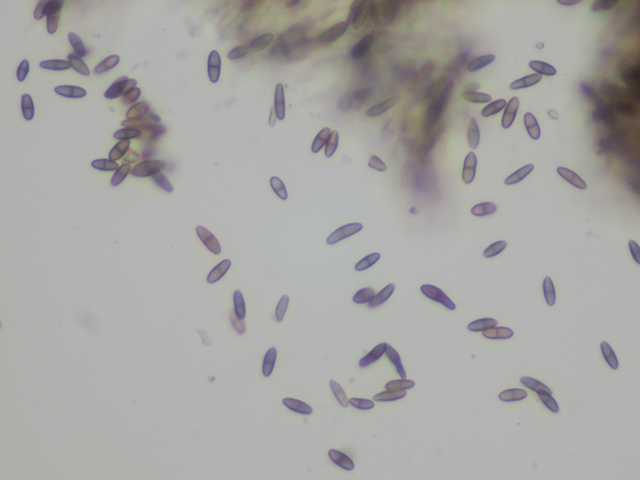
Habit and Morphology:
Saprophytic, described by Tibell as only on wood (but western North American material on Quercus bark is commonly aligned with this taxon), usually without algae.
Thallus immersed.
Ascomata medium sized, 0.4 - 1.2 mm tall, black, with or without a 'pruina' on the excipulum that sometimes extends down the stalk. The 'pruina' described by Tibell (1987) as "cottony hyphae" and rare but distinctive when present. In western North America the pruina seems almost exclusively restricted to colonies on Quercus bark which tend to be either very sparse, small, individual ascomata without pruina, or dense colonies of stout ascomata with abundant pruina. These patterns are suggestive of multiple poorly distinguished lineages.
Anatomy:
Stalk outwardly of pigmented periclinal hyphae, inwardly pale and hyphae more branched. Stalk wine red in section.
Asci cylindrical, tip penetrated with a fine canal.
Mature ascospores medium brown, distinctly septate, 6.5 - 9.8 um, smooth to minutely areolate.
Chemistry:
K- or K+ grayish read in stalk; N+ reddish pigments intensifying toward violet red (sometimes faint in western North America).
Habitat:
Biogeography:
Distribution is likely global, or nearly so, with literature reports from Australia, Eurasia, and North America at the least.
Global Rank:
Conservation:
Notes:
Good description in Tibell 1987 (Australasian).
External Information:
 Index Fungorum: ID=
Index Fungorum: ID= Encyclopedia of Life (EOL): Search
Encyclopedia of Life (EOL): Search - CNALH: Search
- NatureServe:
 ODBaL Search
ODBaL SearchNucleotide Search
ID=76
Type(s): Tuovila et al. 2011; still in my key as C. oregana
Synonyms:
Habit and Morphology:
Anatomy:
Chemistry:
Habitat:
Biogeography:
Global Rank:
Conservation:
Notes:
External Information:
 Index Fungorum: ID=
Index Fungorum: ID= Encyclopedia of Life (EOL): Search
Encyclopedia of Life (EOL): Search - CNALH: Search
- NatureServe:
 ODBaL Search
ODBaL SearchNucleotide Search
ID=77
Type(s): (Selva 2010)
Synonyms:
Habit and Morphology:
Anatomy:
Chemistry:
Habitat:
Biogeography:
Global Rank:
Conservation:
Notes:
External Information:
 Index Fungorum: ID=
Index Fungorum: ID= Encyclopedia of Life (EOL): Search
Encyclopedia of Life (EOL): Search - CNALH: Search
- NatureServe:
 ODBaL Search
ODBaL SearchNucleotide Search
ID=78
Type(s):
Synonyms:
Habit and Morphology:
Anatomy:
Chemistry:
Habitat:
Biogeography:
Global Rank:
Conservation:
Notes:
External Information:
 Index Fungorum: ID=459980
Index Fungorum: ID=459980 Encyclopedia of Life (EOL): Search
Encyclopedia of Life (EOL): Search - CNALH: Search
- NatureServe:
 ODBaL Search
ODBaL SearchNucleotide Search
ID=79
Type(s):
Synonyms:
Habit and Morphology:
Anatomy:
Chemistry:
Habitat:
Biogeography:
Global Rank:
Conservation:
Notes:
External Information:
 Index Fungorum: ID=
Index Fungorum: ID= Encyclopedia of Life (EOL): Search
Encyclopedia of Life (EOL): Search - CNALH: Search
- NatureServe:
 ODBaL Search
ODBaL SearchNucleotide Search
ID=80
Type(s): 2001
Synonyms:
Habit and Morphology:
Anatomy:
Chemistry:
Habitat:
Biogeography:
Global Rank:
Conservation:
Notes:
External Information:
 Index Fungorum: ID=
Index Fungorum: ID= Encyclopedia of Life (EOL): Search
Encyclopedia of Life (EOL): Search - CNALH: Search
- NatureServe:
 ODBaL Search
ODBaL SearchNucleotide Search
ID=81
Type(s):
(1999): (Selva & Tibell 1999)
Synonyms:
Habit and Morphology:
Anatomy:
Chemistry:
Habitat:
Biogeography:
Global Rank:
Conservation:
Notes:
External Information:
 Index Fungorum: ID=
Index Fungorum: ID= Encyclopedia of Life (EOL): Search
Encyclopedia of Life (EOL): Search - CNALH: Search
- NatureServe:
 ODBaL Search
ODBaL SearchNucleotide Search
ID=241
Type(s):
Synonyms:
Habit and Morphology: Parasitic on
Anatomy:
Chemistry: K+ red.
Habitat:
Biogeography:
Global Rank:
Conservation:
Notes:
External Information:
 Index Fungorum: ID=107465
Index Fungorum: ID=107465 Encyclopedia of Life (EOL): Search
Encyclopedia of Life (EOL): Search - CNALH: Search
- NatureServe:
 ODBaL Search
ODBaL SearchNucleotide Search
ID=82
Type(s):
Synonyms:
Habit and Morphology:
Anatomy:
Chemistry:
Habitat:
Biogeography:
Global Rank:
Conservation:
Notes:
External Information:
 Index Fungorum: ID=
Index Fungorum: ID= Encyclopedia of Life (EOL): Search
Encyclopedia of Life (EOL): Search - CNALH: Search
- NatureServe:
 ODBaL Search
ODBaL SearchNucleotide Search
ID=83
Type(s):
Titov 2006
Synonyms:
Habit and Morphology:
Anatomy:
Chemistry:
Habitat:
Biogeography:
Global Rank:
Conservation:
Notes:
External Information:
 Index Fungorum: ID=
Index Fungorum: ID= Encyclopedia of Life (EOL): Search
Encyclopedia of Life (EOL): Search - CNALH: Search
- NatureServe:
 ODBaL Search
ODBaL SearchNucleotide Search
ID=84
Type(s):
Synonyms:
Habit and Morphology:
Anatomy:
Chemistry:
Habitat:
Biogeography:
Global Rank:
Conservation:
Notes:
External Information:
 Index Fungorum: ID=
Index Fungorum: ID= Encyclopedia of Life (EOL): Search
Encyclopedia of Life (EOL): Search - CNALH: Search
- NatureServe:
 ODBaL Search
ODBaL SearchNucleotide Search
ID=85
Type(s):
1987
Synonyms:
Habit and Morphology:
Anatomy:
Chemistry:
Habitat:
Biogeography:
Global Rank:
Conservation:
Notes:
External Information:
 Index Fungorum: ID=
Index Fungorum: ID= Encyclopedia of Life (EOL): Search
Encyclopedia of Life (EOL): Search - CNALH: Search
- NatureServe:
 ODBaL Search
ODBaL SearchNucleotide Search
ID=86
Type(s):
(2006): Titov 2006
Synonyms:
Habit and Morphology:
Anatomy:
Chemistry:
Habitat:
Biogeography:
Global Rank:
Conservation:
Notes:
External Information:
 Index Fungorum: ID=
Index Fungorum: ID= Encyclopedia of Life (EOL): Search
Encyclopedia of Life (EOL): Search - CNALH: Search
- NatureServe:
 ODBaL Search
ODBaL SearchNucleotide Search
ID=87
Type(s):
Synonyms:
Habit and Morphology:
Anatomy:
Chemistry:
Habitat:
Biogeography:
Global Rank:
Conservation:
Notes:
External Information:
 Index Fungorum: ID=
Index Fungorum: ID= Encyclopedia of Life (EOL): Search
Encyclopedia of Life (EOL): Search - CNALH: Search
- NatureServe:
 ODBaL Search
ODBaL SearchNucleotide Search
ID=88
Type(s):
Synonyms:
Habit and Morphology:
Anatomy:
Chemistry:
Habitat:
Biogeography:
Global Rank:
Conservation:
Notes:
External Information:
 Index Fungorum: ID=
Index Fungorum: ID= Encyclopedia of Life (EOL): Search
Encyclopedia of Life (EOL): Search - CNALH: Search
- NatureServe:
 ODBaL Search
ODBaL SearchNucleotide Search
ID=89
Type(s):
(2006): Titov 2006
Synonyms:
Habit and Morphology:
Anatomy:
Chemistry:
Habitat:
Biogeography:
Global Rank:
Conservation:
Notes:
External Information:
 Index Fungorum: ID=
Index Fungorum: ID= Encyclopedia of Life (EOL): Search
Encyclopedia of Life (EOL): Search - CNALH: Search
- NatureServe:
 ODBaL Search
ODBaL SearchNucleotide Search
ID=90
Type(s):
-1991
Synonyms:
Habit and Morphology:
Anatomy:
Chemistry:
Habitat:
Biogeography:
Global Rank:
Conservation:
Notes:
External Information:
 Index Fungorum: ID=
Index Fungorum: ID= Encyclopedia of Life (EOL): Search
Encyclopedia of Life (EOL): Search - CNALH: Search
- NatureServe:
 ODBaL Search
ODBaL SearchNucleotide Search
ID=91
Type(s):
Titov (2006) includes Protocalicium jaczevskii
Synonyms:
Habit and Morphology:
Anatomy:
Chemistry:
Habitat:
Biogeography:
Global Rank:
Conservation:
Notes:
External Information:
 Index Fungorum: ID=
Index Fungorum: ID= Encyclopedia of Life (EOL): Search
Encyclopedia of Life (EOL): Search - CNALH: Search
- NatureServe:
 ODBaL Search
ODBaL SearchNucleotide Search
ID=92
Type(s): (Lendemer et al. 2008c)
Synonyms:
Habit and Morphology:
Anatomy:
Chemistry:
Habitat:
Biogeography:
Global Rank:
Conservation:
Notes:
External Information:
 Index Fungorum: ID=
Index Fungorum: ID= Encyclopedia of Life (EOL): Search
Encyclopedia of Life (EOL): Search - CNALH: Search
- NatureServe:
 ODBaL Search
ODBaL SearchNucleotide Search
ID=244
Type(s): Tuovila et al. 2011
Synonyms:
Habit and Morphology:
Anatomy:
Chemistry:
Habitat:
Biogeography:
Global Rank:
Conservation:
Notes:
External Information:
 Index Fungorum: ID=
Index Fungorum: ID= Encyclopedia of Life (EOL): Search
Encyclopedia of Life (EOL): Search - CNALH: Search
- NatureServe:
 ODBaL Search
ODBaL SearchNucleotide Search
ID=250
Type(s):
Synonyms:
Habit and Morphology:
Anatomy:
Chemistry:
Habitat:
Biogeography:
Global Rank:
Conservation:
Notes:
External Information:
 Index Fungorum: ID=
Index Fungorum: ID= Encyclopedia of Life (EOL): Search
Encyclopedia of Life (EOL): Search - CNALH: Search
- NatureServe:
 ODBaL Search
ODBaL SearchNucleotide Search
ID=94
Type(s):
Synonyms:
Habit and Morphology:
Anatomy:
Chemistry:
Habitat:
Biogeography:
Global Rank:
Conservation:
Notes:
External Information:
 Index Fungorum: ID=
Index Fungorum: ID= Encyclopedia of Life (EOL): Search
Encyclopedia of Life (EOL): Search - CNALH: Search
- NatureServe:
 ODBaL Search
ODBaL SearchNucleotide Search
ID=95
Type(s): (Tibell 1998)
Synonyms:
Habit and Morphology:
Anatomy:
Chemistry:
Habitat:
Biogeography:
Global Rank:
Conservation:
Notes:
External Information:
 Index Fungorum: ID=
Index Fungorum: ID= Encyclopedia of Life (EOL): Search
Encyclopedia of Life (EOL): Search - CNALH: Search
- NatureServe:
 ODBaL Search
ODBaL SearchNucleotide Search
ID=96
Type(s): -2004
Synonyms:
Habit and Morphology:
Anatomy:
Chemistry:
Habitat:
Biogeography:
Global Rank:
Conservation:
Notes:
External Information:
 Index Fungorum: ID=
Index Fungorum: ID= Encyclopedia of Life (EOL): Search
Encyclopedia of Life (EOL): Search - CNALH: Search
- NatureServe:
 ODBaL Search
ODBaL SearchNucleotide Search
ID=99
Type(s):
(2006): Titov 2006
Synonyms:
Habit and Morphology:
Anatomy:
Chemistry:
Habitat:
Biogeography:
Global Rank:
Conservation:
Notes:
External Information:
 Index Fungorum: ID=
Index Fungorum: ID= Encyclopedia of Life (EOL): Search
Encyclopedia of Life (EOL): Search - CNALH: Search
- NatureServe:
 ODBaL Search
ODBaL SearchNucleotide Search
ID=100
Type(s): (2003): Rikkinen 2003; Tuovila et al 2011
Synonyms:
Habit and Morphology:
Anatomy:
Chemistry:
Habitat:
Biogeography:
Global Rank:
Conservation:
Notes:
External Information:
 Index Fungorum: ID=
Index Fungorum: ID= Encyclopedia of Life (EOL): Search
Encyclopedia of Life (EOL): Search - CNALH: Search
- NatureServe:
 ODBaL Search
ODBaL SearchNucleotide Search
ID=101
Type(s):
-1979
Synonyms:
Habit and Morphology:
Anatomy:
Chemistry:
Habitat:
Biogeography:
Global Rank:
Conservation:
Notes:
External Information:
 Index Fungorum: ID=
Index Fungorum: ID= Encyclopedia of Life (EOL): Search
Encyclopedia of Life (EOL): Search - CNALH: Search
- NatureServe:
 ODBaL Search
ODBaL SearchNucleotide Search
ID=102
Type(s): (1987) (Harris & Lendemer 2005, Spribille & Bj?rk 2008)
Synonyms:

Habit and Morphology:
Anatomy:
Chemistry:
Habitat:
Biogeography:
Global Rank:
Conservation:
Notes:
External Information:
 Index Fungorum: ID=
Index Fungorum: ID= Encyclopedia of Life (EOL): Search
Encyclopedia of Life (EOL): Search - CNALH: Search
- NatureServe:
 ODBaL Search
ODBaL SearchNucleotide Search
ID=103
Type(s): -1987
Synonyms:
Habit and Morphology:
Anatomy:
Chemistry:
Habitat:
Biogeography:
Global Rank:
Conservation:
Notes:
External Information:
 Index Fungorum: ID=
Index Fungorum: ID= Encyclopedia of Life (EOL): Search
Encyclopedia of Life (EOL): Search - CNALH: Search
- NatureServe:
 ODBaL Search
ODBaL SearchNucleotide Search
ID=104
Type(s):
Synonyms:
Habit and Morphology:
Anatomy:
Chemistry:
Habitat:
Biogeography:
Global Rank:
Conservation:
Notes:
External Information:
 Index Fungorum: ID=
Index Fungorum: ID= Encyclopedia of Life (EOL): Search
Encyclopedia of Life (EOL): Search - CNALH: Search
- NatureServe:
 ODBaL Search
ODBaL SearchNucleotide Search
ID=105
Type(s): 1995
Synonyms:
Habit and Morphology:
Anatomy:
Chemistry:
Habitat:
Biogeography:
Global Rank:
Conservation:
Notes:
External Information:
 Index Fungorum: ID=
Index Fungorum: ID= Encyclopedia of Life (EOL): Search
Encyclopedia of Life (EOL): Search - CNALH: Search
- NatureServe:
 ODBaL Search
ODBaL SearchNucleotide Search
ID=106
Type(s):
-1995
Synonyms:
Habit and Morphology:
Anatomy:
Chemistry:
Habitat:
Biogeography:
Global Rank:
Conservation:
Notes:
External Information:
 Index Fungorum: ID=
Index Fungorum: ID= Encyclopedia of Life (EOL): Search
Encyclopedia of Life (EOL): Search - CNALH: Search
- NatureServe:
 ODBaL Search
ODBaL SearchNucleotide Search
ID=107
Type(s): (2003) = C. diabolica and C. zebrina: Rikkinen 2003; Tuovila et al. 2011
Synonyms:
Habit and Morphology:
Anatomy:
Chemistry:
Habitat:
Biogeography:
Global Rank:
Conservation:
Notes:
External Information:
 Index Fungorum: ID=
Index Fungorum: ID= Encyclopedia of Life (EOL): Search
Encyclopedia of Life (EOL): Search - CNALH: Search
- NatureServe:
 ODBaL Search
ODBaL SearchNucleotide Search
ID=108
Type(s): -1978
Synonyms:
Habit and Morphology:
Anatomy:
Chemistry:
Habitat:
Biogeography:
Global Rank:
Conservation:
Notes:
External Information:
 Index Fungorum: ID=
Index Fungorum: ID= Encyclopedia of Life (EOL): Search
Encyclopedia of Life (EOL): Search - CNALH: Search
- NatureServe:
 ODBaL Search
ODBaL SearchNucleotide Search
ID=109
Type(s):
Synonyms:
Habit and Morphology:
Anatomy:
Chemistry:
Habitat:
Biogeography:
Global Rank:
Conservation:
Notes:
External Information:
 Index Fungorum: ID=
Index Fungorum: ID= Encyclopedia of Life (EOL): Search
Encyclopedia of Life (EOL): Search - CNALH: Search
- NatureServe:
 ODBaL Search
ODBaL SearchNucleotide Search
ID=110
Type(s):
Synonyms:
Habit and Morphology:
Anatomy:
Chemistry:
Habitat:
Biogeography:
Global Rank:
Conservation:
Notes:
External Information:
 Index Fungorum: ID=
Index Fungorum: ID= Encyclopedia of Life (EOL): Search
Encyclopedia of Life (EOL): Search - CNALH: Search
- NatureServe:
 ODBaL Search
ODBaL SearchNucleotide Search
ID=111
Type(s):
Synonyms:
Habit and Morphology:
Anatomy:
Chemistry:
Habitat:
Biogeography:
Global Rank:
Conservation:
Notes:
External Information:
 Index Fungorum: ID=
Index Fungorum: ID= Encyclopedia of Life (EOL): Search
Encyclopedia of Life (EOL): Search - CNALH: Search
- NatureServe:
 ODBaL Search
ODBaL SearchNucleotide Search
ID=249
Type(s):
Synonyms:
Habit and Morphology:
Anatomy:
Chemistry:
Habitat:
Biogeography:
Global Rank:
Conservation:
Notes:
External Information:
 Index Fungorum: ID=
Index Fungorum: ID= Encyclopedia of Life (EOL): Search
Encyclopedia of Life (EOL): Search - CNALH: Search
- NatureServe:
 ODBaL Search
ODBaL SearchNucleotide Search
ID=112
Type(s):
may be in my key under Mycocalicium
Synonyms:
Habit and Morphology:
Anatomy:
Chemistry:
Habitat:
Biogeography:
Global Rank:
Conservation:
Notes:
External Information:
 Index Fungorum: ID=
Index Fungorum: ID= Encyclopedia of Life (EOL): Search
Encyclopedia of Life (EOL): Search - CNALH: Search
- NatureServe:
 ODBaL Search
ODBaL SearchNucleotide Search
ID=113
Type(s):
Synonyms:
Habit and Morphology:
Anatomy:
Chemistry:
Habitat:
Biogeography:
Global Rank:
Conservation:
Notes:
External Information:
 Index Fungorum: ID=
Index Fungorum: ID= Encyclopedia of Life (EOL): Search
Encyclopedia of Life (EOL): Search - CNALH: Search
- NatureServe:
 ODBaL Search
ODBaL SearchNucleotide Search
ID=114
Type(s):
Synonyms:
Habit and Morphology:
Anatomy:
Chemistry:
Habitat:
Biogeography:
Global Rank:
Conservation:
Notes:
External Information:
 Index Fungorum: ID=
Index Fungorum: ID= Encyclopedia of Life (EOL): Search
Encyclopedia of Life (EOL): Search - CNALH: Search
- NatureServe:
 ODBaL Search
ODBaL SearchNucleotide Search
ID=116
Type(s):
Synonyms:
Habit and Morphology:
Anatomy:
Chemistry:
Habitat:
Biogeography:
Global Rank:
Conservation:
Notes:
External Information:
 Index Fungorum: ID=
Index Fungorum: ID= Encyclopedia of Life (EOL): Search
Encyclopedia of Life (EOL): Search - CNALH: Search
- NatureServe:
 ODBaL Search
ODBaL SearchNucleotide Search
ID=117
Type(s): 1982
Synonyms:
Habit and Morphology:
Anatomy:
Chemistry:
Habitat:
Biogeography:
Global Rank:
Conservation:
Notes:
External Information:
 Index Fungorum: ID=
Index Fungorum: ID= Encyclopedia of Life (EOL): Search
Encyclopedia of Life (EOL): Search - CNALH: Search
- NatureServe:
 ODBaL Search
ODBaL SearchNucleotide Search
ID=118
Type(s):
-1987
Synonyms:
Habit and Morphology:
Anatomy:
Chemistry:
Habitat:
Biogeography:
Global Rank:
Conservation:
Notes:
External Information:
 Index Fungorum: ID=
Index Fungorum: ID= Encyclopedia of Life (EOL): Search
Encyclopedia of Life (EOL): Search - CNALH: Search
- NatureServe:
 ODBaL Search
ODBaL SearchNucleotide Search
ID=119
Type(s): -1987
Synonyms:
Habit and Morphology:
Anatomy:
Chemistry:
Habitat:
Biogeography:
Global Rank:
Conservation:
Notes:
External Information:
 Index Fungorum: ID=
Index Fungorum: ID= Encyclopedia of Life (EOL): Search
Encyclopedia of Life (EOL): Search - CNALH: Search
- NatureServe:
 ODBaL Search
ODBaL SearchNucleotide Search
ID=120
Type(s):
Synonyms:
Habit and Morphology:
Anatomy:
Chemistry:
Habitat:
Biogeography:
Global Rank:
Conservation:
Notes:
External Information:
 Index Fungorum: ID=
Index Fungorum: ID= Encyclopedia of Life (EOL): Search
Encyclopedia of Life (EOL): Search - CNALH: Search
- NatureServe:
 ODBaL Search
ODBaL SearchNucleotide Search
ID=121
Type(s):
Synonyms:
Habit and Morphology:
Anatomy:
Chemistry:
Habitat:
Biogeography:
Global Rank:
Conservation:
Notes:
External Information:
 Index Fungorum: ID=
Index Fungorum: ID= Encyclopedia of Life (EOL): Search
Encyclopedia of Life (EOL): Search - CNALH: Search
- NatureServe:
 ODBaL Search
ODBaL SearchNucleotide Search
ID=122
Type(s):
(2006): Titov 2006
Synonyms:
Habit and Morphology:
Anatomy:
Chemistry:
Habitat:
Biogeography:
Global Rank:
Conservation:
Notes:
External Information:
 Index Fungorum: ID=
Index Fungorum: ID= Encyclopedia of Life (EOL): Search
Encyclopedia of Life (EOL): Search - CNALH: Search
- NatureServe:
 ODBaL Search
ODBaL SearchNucleotide Search
ID=123
Type(s):
Synonyms:
Habit and Morphology:
Anatomy:
Chemistry:
Habitat:
Biogeography:
Global Rank:
Conservation:
Notes:
External Information:
 Index Fungorum: ID=
Index Fungorum: ID= Encyclopedia of Life (EOL): Search
Encyclopedia of Life (EOL): Search - CNALH: Search
- NatureServe:
 ODBaL Search
ODBaL SearchNucleotide Search
ID=124
Type(s):
Synonyms:
Habit and Morphology:
Anatomy:
Chemistry:
Habitat:
Biogeography:
Global Rank:
Conservation:
Notes:
External Information:
 Index Fungorum: ID=
Index Fungorum: ID= Encyclopedia of Life (EOL): Search
Encyclopedia of Life (EOL): Search - CNALH: Search
- NatureServe:
 ODBaL Search
ODBaL SearchNucleotide Search
ID=125
Type(s):
(Tibell 1987
Synonyms:
Habit and Morphology:
Anatomy:
Chemistry:
Habitat:
Biogeography:
Global Rank:
Conservation:
Notes:
External Information:
 Index Fungorum: ID=
Index Fungorum: ID= Encyclopedia of Life (EOL): Search
Encyclopedia of Life (EOL): Search - CNALH: Search
- NatureServe:
 ODBaL Search
ODBaL SearchNucleotide Search
ID=248
Type(s):
Synonyms:
Habit and Morphology:
Anatomy:
Chemistry:
Habitat:
Biogeography:
Global Rank:
Conservation:
Notes:
External Information:
 Index Fungorum: ID=
Index Fungorum: ID= Encyclopedia of Life (EOL): Search
Encyclopedia of Life (EOL): Search - CNALH: Search
- NatureServe:
 ODBaL Search
ODBaL SearchNucleotide Search
ID=126
Type(s):
Synonyms:
Habit and Morphology:
Anatomy:
Chemistry:
Habitat:
Biogeography:
Global Rank:
Conservation:
Notes:
External Information:
 Index Fungorum: ID=
Index Fungorum: ID= Encyclopedia of Life (EOL): Search
Encyclopedia of Life (EOL): Search - CNALH: Search
- NatureServe:
 ODBaL Search
ODBaL SearchNucleotide Search
ID=127
Type(s):
(2006): Titov 2006
Synonyms:
Habit and Morphology:
Anatomy:
Chemistry:
Habitat:
Biogeography:
Global Rank:
Conservation:
Notes:
External Information:
 Index Fungorum: ID=
Index Fungorum: ID= Encyclopedia of Life (EOL): Search
Encyclopedia of Life (EOL): Search - CNALH: Search
- NatureServe:
 ODBaL Search
ODBaL SearchNucleotide Search
ID=128
Type(s):
(1998): Titov 2006
Synonyms:
Habit and Morphology:
Anatomy:
Chemistry:
Habitat:
Biogeography:
Global Rank:
Conservation:
Notes:
External Information:
 Index Fungorum: ID=
Index Fungorum: ID= Encyclopedia of Life (EOL): Search
Encyclopedia of Life (EOL): Search - CNALH: Search
- NatureServe:
 ODBaL Search
ODBaL SearchNucleotide Search
ID=129
Type(s): (1998): Titov & Tibell 1998 listed in Tibell?s checklist (?99), Europe
Synonyms:
Habit and Morphology:
Anatomy:
Chemistry:
Habitat:
Biogeography:
Global Rank:
Conservation:
Notes:
External Information:
 Index Fungorum: ID=
Index Fungorum: ID= Encyclopedia of Life (EOL): Search
Encyclopedia of Life (EOL): Search - CNALH: Search
- NatureServe:
 ODBaL Search
ODBaL SearchNucleotide Search
ID=131
Type(s):
Synonyms:
Habit and Morphology:
Anatomy:
Chemistry:
Habitat:
Biogeography:
Global Rank:
Conservation:
Notes:
External Information:
 Index Fungorum: ID=
Index Fungorum: ID= Encyclopedia of Life (EOL): Search
Encyclopedia of Life (EOL): Search - CNALH: Search
- NatureServe:
 ODBaL Search
ODBaL SearchNucleotide Search
ID=132
Type(s):
Synonyms:
Habit and Morphology:
Anatomy:
Chemistry:
Habitat:
Biogeography:
Global Rank:
Conservation:
Notes:
External Information:
 Index Fungorum: ID=
Index Fungorum: ID= Encyclopedia of Life (EOL): Search
Encyclopedia of Life (EOL): Search - CNALH: Search
- NatureServe:
 ODBaL Search
ODBaL SearchNucleotide Search
ID=133
Type(s): (2001): Titov 2001
Synonyms:
Habit and Morphology:
Anatomy:
Chemistry:
Habitat:
Biogeography:
Global Rank:
Conservation:
Notes:
External Information:
 Index Fungorum: ID=
Index Fungorum: ID= Encyclopedia of Life (EOL): Search
Encyclopedia of Life (EOL): Search - CNALH: Search
- NatureServe:
 ODBaL Search
ODBaL SearchNucleotide Search
ID=134
Type(s):
Synonyms:
Habit and Morphology:
Anatomy:
Chemistry:
Habitat:
Biogeography:
Global Rank:
Conservation:
Notes:
External Information:
 Index Fungorum: ID=
Index Fungorum: ID= Encyclopedia of Life (EOL): Search
Encyclopedia of Life (EOL): Search - CNALH: Search
- NatureServe:
 ODBaL Search
ODBaL SearchNucleotide Search
ID=136
Type(s):
Synonyms:
Habit and Morphology:
Anatomy:
Chemistry:
Habitat:
Biogeography:
Global Rank:
Conservation:
Notes:
External Information:
 Index Fungorum: ID=
Index Fungorum: ID= Encyclopedia of Life (EOL): Search
Encyclopedia of Life (EOL): Search - CNALH: Search
- NatureServe:
 ODBaL Search
ODBaL SearchNucleotide Search
Count of taxa = 79


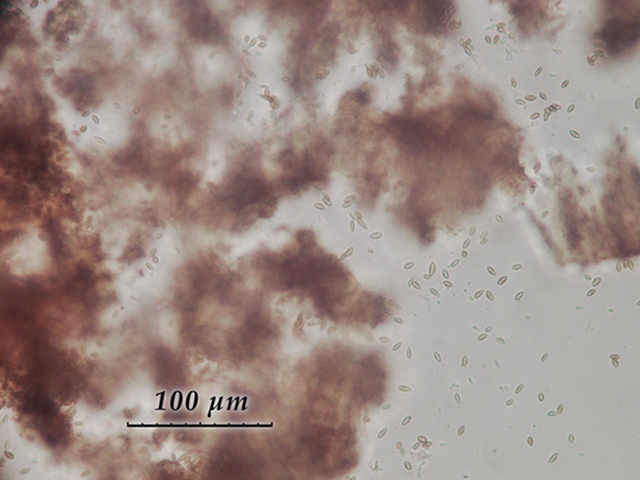
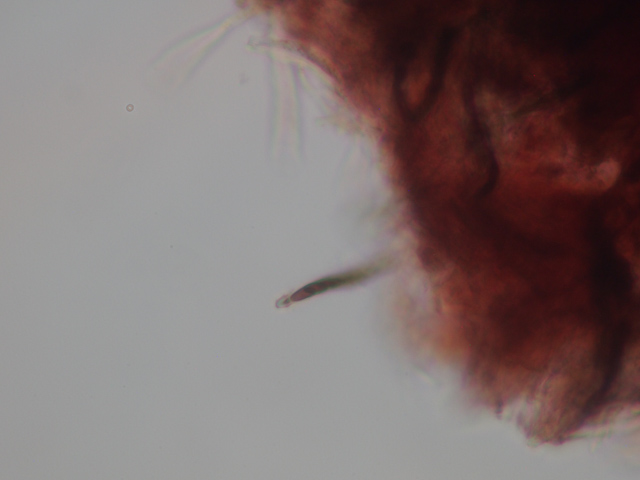
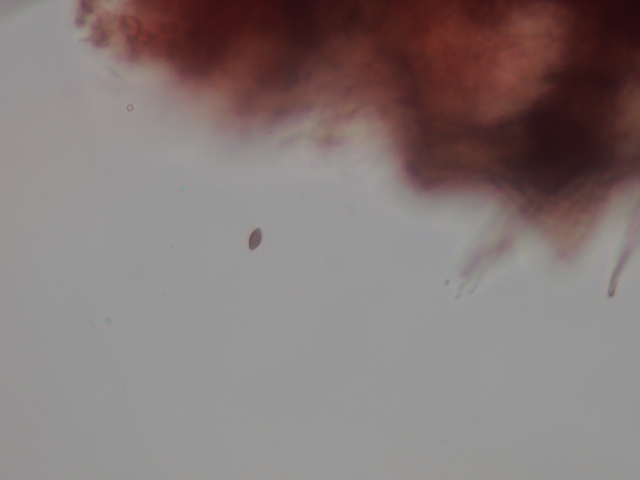

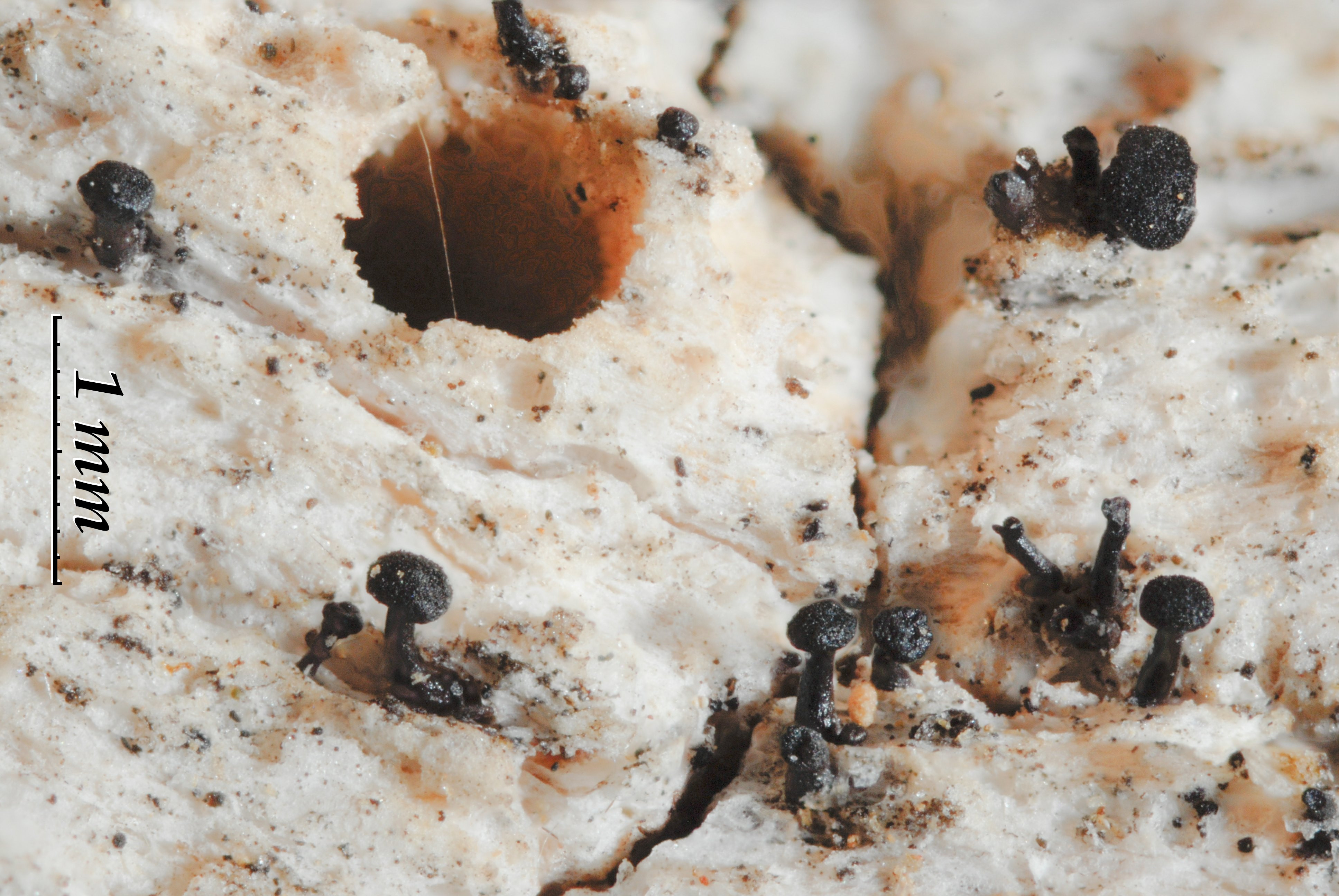
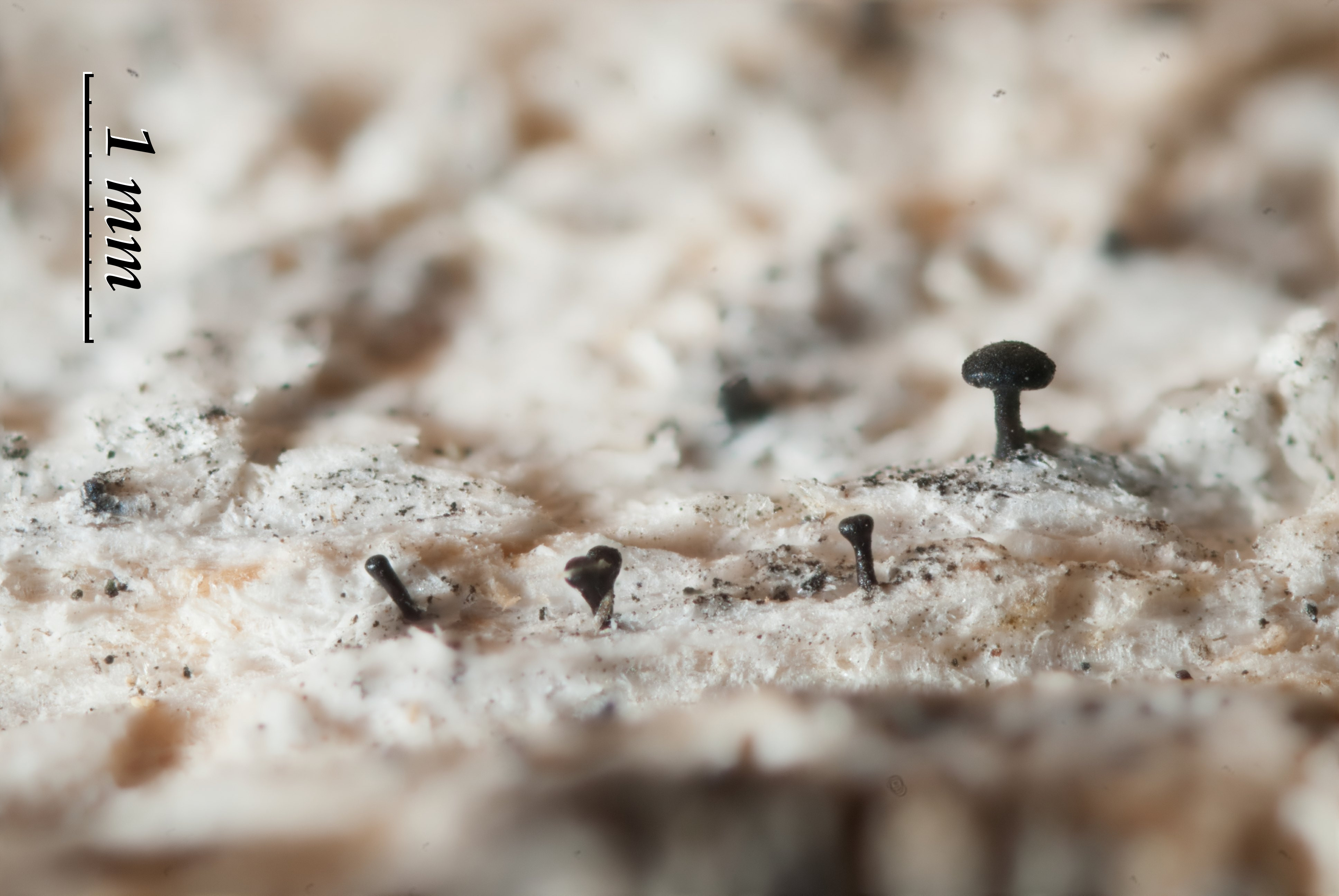
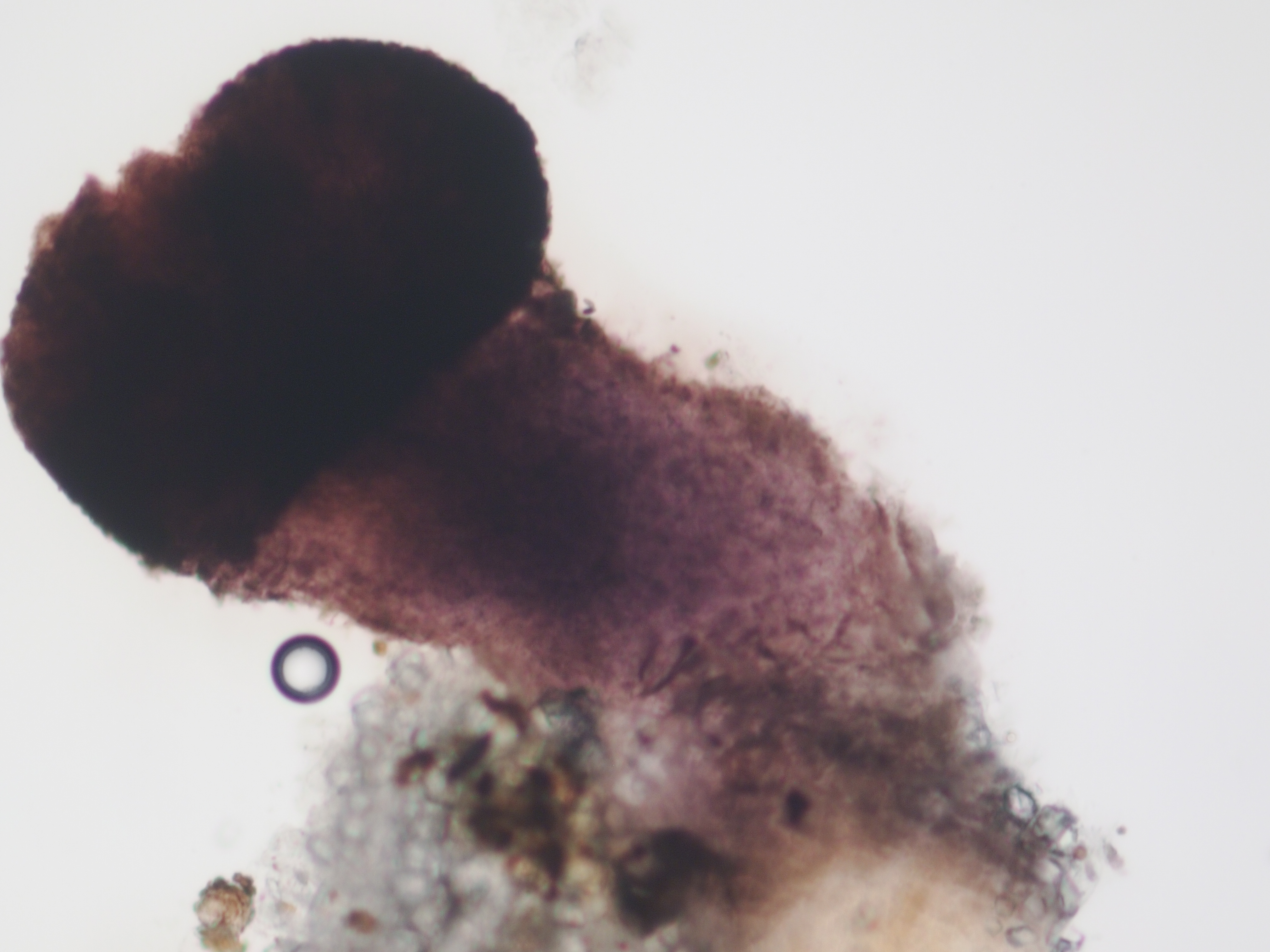
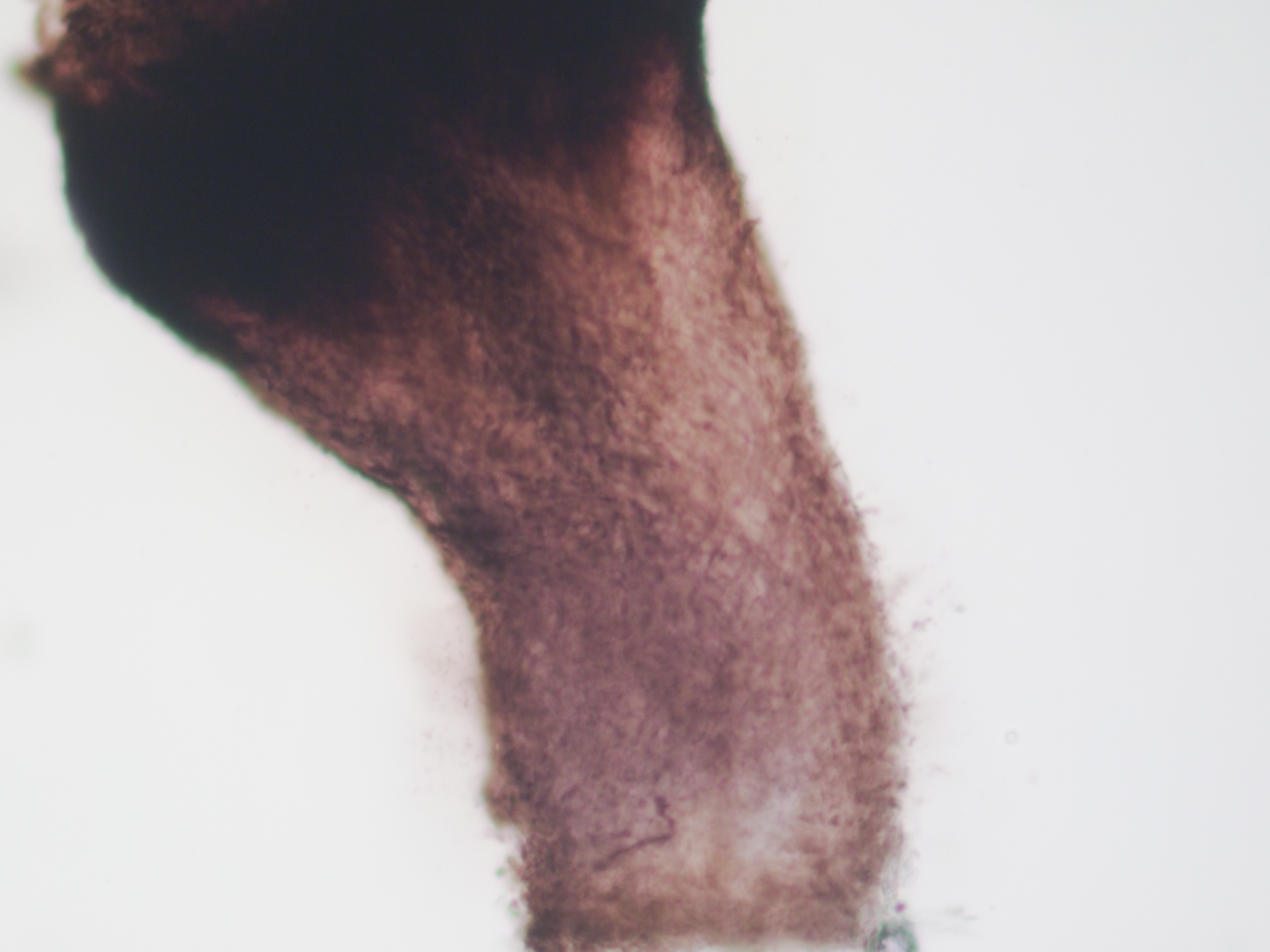
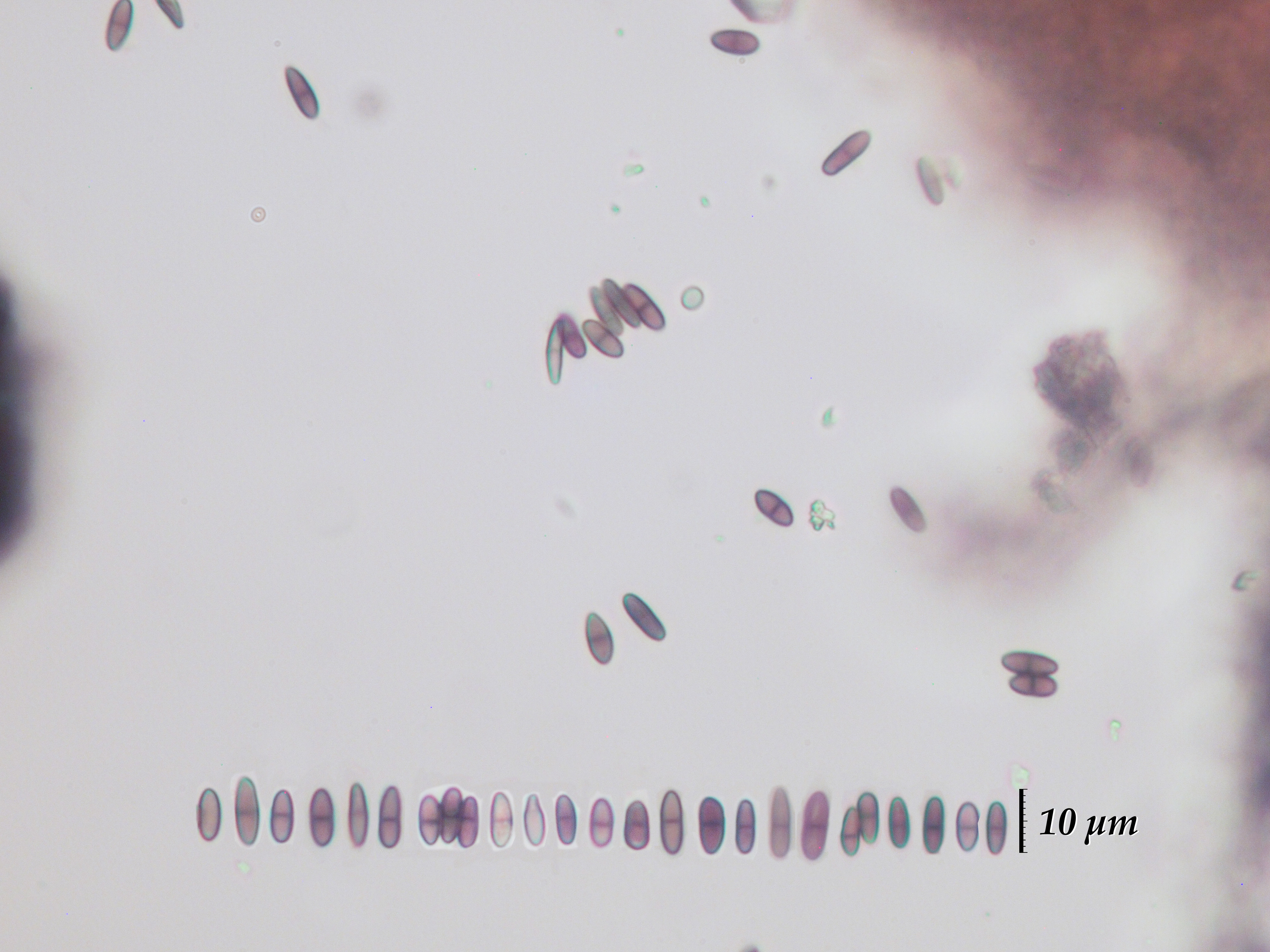

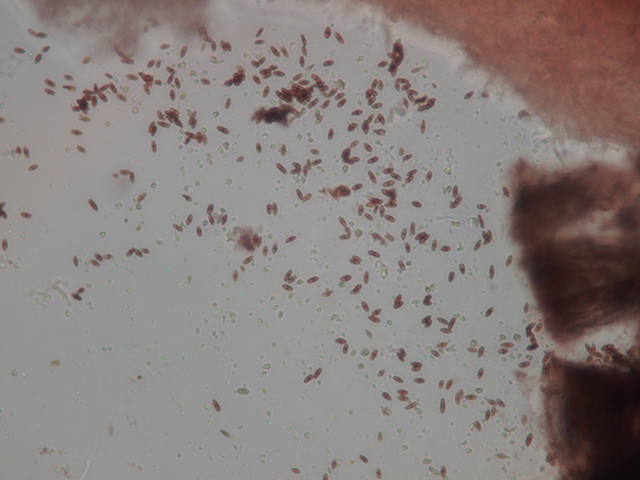
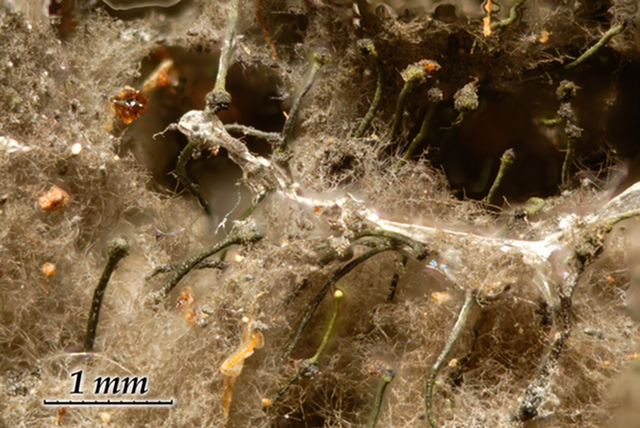
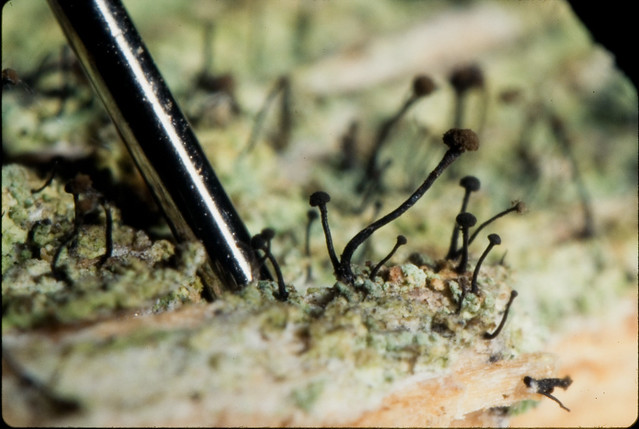



.jpg)
